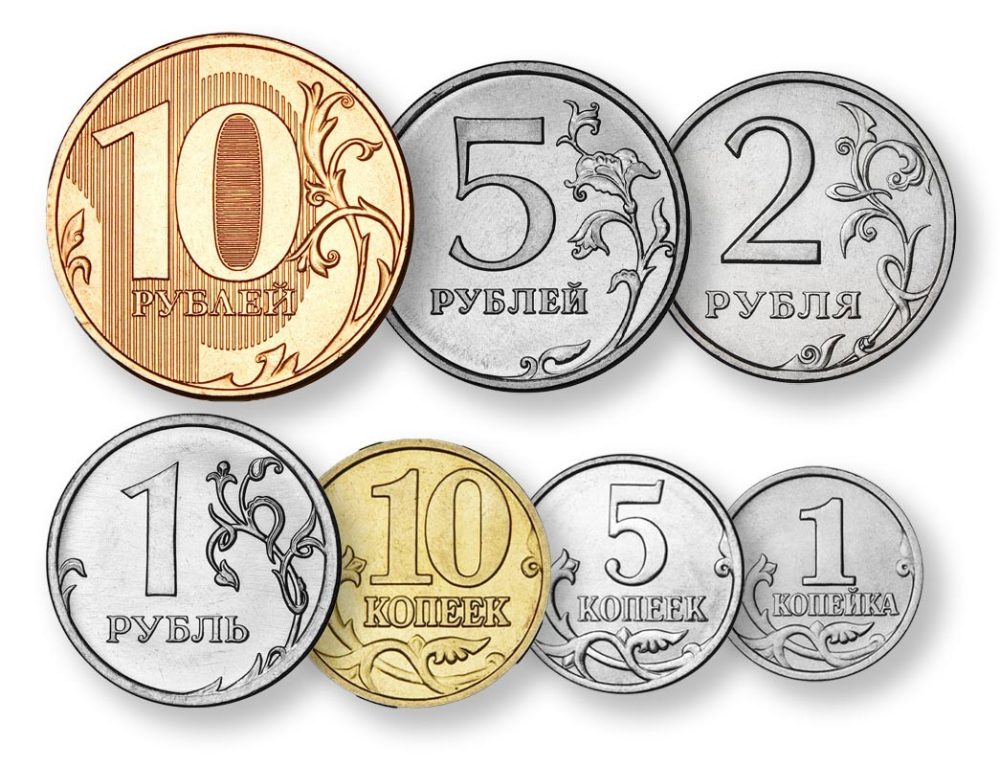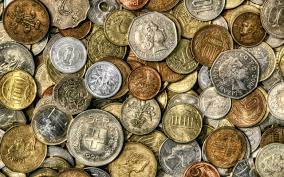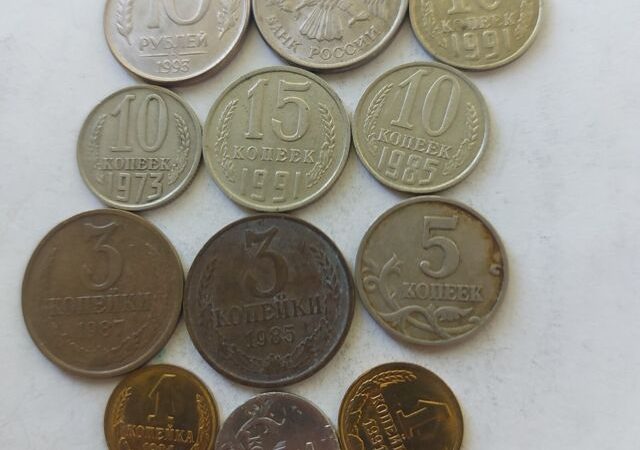During this period, a lot of coins with a denomination of 1 ruble appeared, which are very interesting and unusual in numismatic terms. In our review, we will bypass varieties that are difficult to identify (for example, 1 ruble of 2010, in accordance with the catalog of varieties, has a couple of valuable varieties on the obverse, but only an expert will undertake to identify them), but we will talk about those that are easy to identify.
It should be said that any modern coins of the Russian Federation of the early years of issue, starting from 1997, in a stamp shine without mechanical defects, are already worth more than their face value. Sometimes even much more expensive. The reason is clear: those who have recently started collecting Russian weather cards want to put ideal coins in an album, but you can’t just get them for change. The bulk of the money over the two decades of being in circulation has been greatly worn out and has long lost its original radiance.
1 ruble 1997 MMD
However, worn ruble coins can be expensive if they belong to a rare variety that is in high demand in the collection environment. For Moscow rubles with the date “1997”, this variety is called “wide edging”. It is difficult to confuse a coin with such an edging with an ordinary one, even in appearance. But it is easier to focus on the main feature.
An ordinary coin has a gap between the edging and the top sheet of the floral ornament. In valuable specimens, this sheet goes deep under the edging. There are two types of “wide edging”: with and without a step. An edge without a step is considered rarer and more expensive. It should be noted that the coins of St. Petersburg have a visually wider edge than those of Moscow, but the 1997 SPMD rubles are not rare.
1 ruble 1998 MMD
The “wide edging” is also present on the ruble coins of the MMD of 1998, but there it is less pronounced. Here you should consider the coin under magnification. The sign is the same: for an ordinary coin, a gap is visible between the edging and the top sheet, while for a rare kit and the sheet are in contact. Any kind of “wide edge” 1997-1998 costs several thousand.
but the specific price depends on the degree of preservation of the copy. Moscow rubles also have a lesser known variety, on which the MMD monogram is located lower. However, in collection circles it is rather considered infrequent, rather than rare, so it will not be possible to get rich on such a ruble, although it costs more than its face value.
1 ruble 2000 SPMD
In 1999, the Bank of Russia decided that already minted coins with the dates “1997” and “1998” were enough for circulation, so some denominations from the line were not mass minted at all, while for others the order for minting was reduced. Ruble coins with the date “1999” are rarely found in circulation, but with a careful review of the change.
they can be caught. It is a different matter with 2000, when neither MMD nor SPMD received an order for rubles. However, the mints were ready for minting. This is evidenced by the trial ruler of the St. Petersburg Court with the date “2000”. Numismatists learned about the existence of these coins almost two decades after they were minted, and there is still little information about them. However, it is known that these are originals, and even their reliable photographs are available.
1 ruble 2001 MMD
We can say that it was with this ruble that the pursuit of rarities began, when Internet pages everywhere called for “Don’t miss it for change !!!” But it is useless to look for such a coin just in change, although according to legend, one of the known specimens was taken out of circulation. And yet, one should not confuse the myth, invented to legitimize a unique coin, with real life.
The legend about the discovery of such a ruble in a set of small change coins of 2002 MMD looks more reliable. The situation still looks strange, since the design of the obverse of the ruble coins of 2001 and 2002. differs not only in date. But still, it can be assumed that in such an original way they tried to carry out the removal of rarities from a secure facility when the control on it was impeccable. Among the inhabitants, even far from numismatics, rumors about a rare coin caused a great stir.
Under this case, unknown “masters” set up the production of “rarities”. For the product, they took the commemorative ruble SPMD “10 years of the CIS”, on a high-precision machine tool they made a recess on the reverse and inserted a ruble of an ordinary year turned along the edge. For collectors, such crafts are called “glass” and are not in demand.
The calculation was precisely for the townsfolk who know about the rare year, but do not distinguish the SPMD emblem (obverse commemorative ruble) from MMD (unique obverse). Due to the exceptional rarity, the price of 1 ruble of 2001 MMD, if it appears at the auction, is difficult to predict. Until now, you can find pages that report that a valuable coin is being sold for 30,000 rubles. Numismatists copy them to the humor section and promise to buy at least a whole bucket of 2001 MMD rubles for this money. Bucket, by the way, so far no one has brought.





